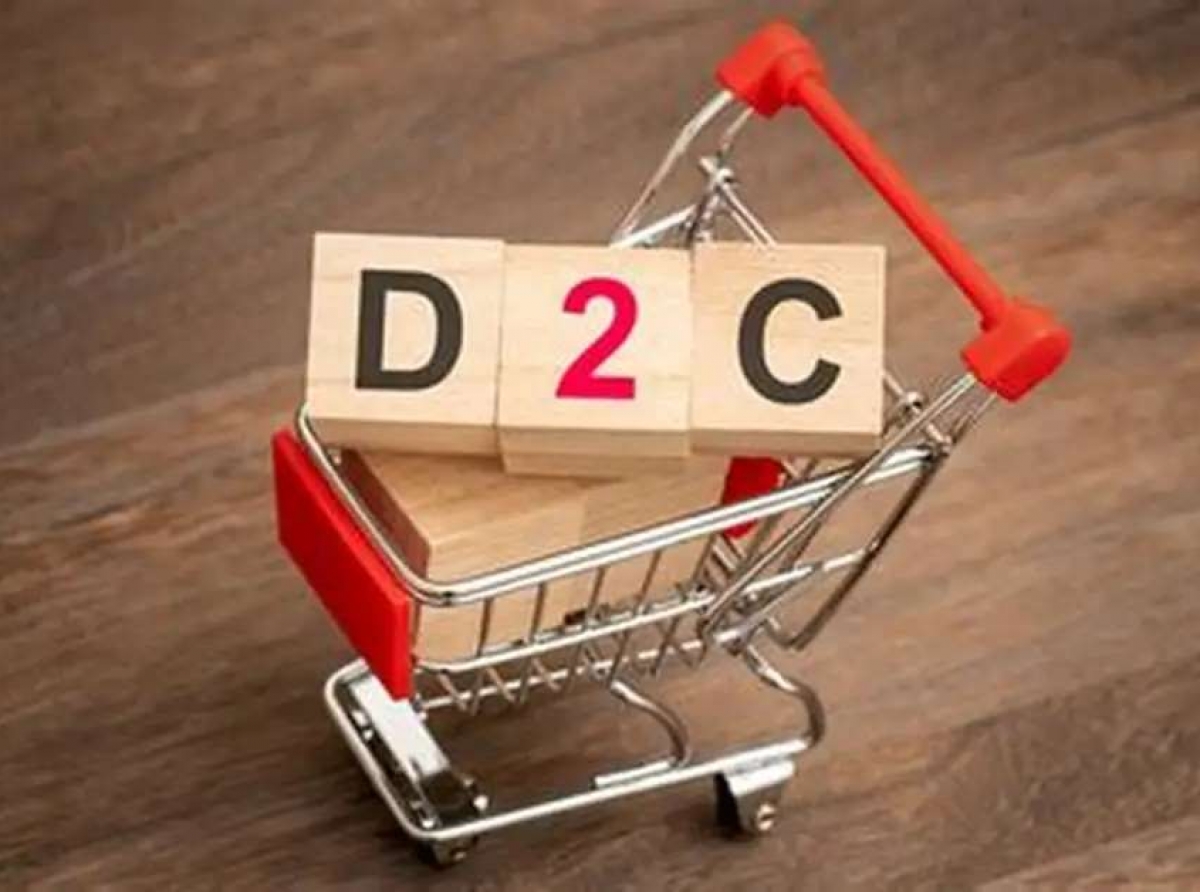The phygital revolution, why D2C brands are betting big on physical stores

The clear boundaries between online and offline shopping are dissolving in Indian retail space. A new generation of Direct-to-Consumer (D2C) brands those that first built their identities in the digital space, are now taking strong steps towards physical retail.
From mattresses and skincare to jewellery and athleisure, these brands are setting up brick-and-mortar outlets across major cities, having realized that customer trust, loyalty, and experience often require a tangible connection.
A recent CBRE report highlights, retail leasing by D2C brands more than doubled in just one year from 8 per cent in the first half of 2024 to 18 per cent in the first half of 2025.
Read our latest issue
This rise signals not merely growth of retail footprints but a recalibration: the transition from clicks to bricks is now a defining chapter in India’s D2C growth story.
From digital disruptors to retail contenders
The Indian D2C market, valued at $87.5 billion in 2025, is expected to cross $100 billion by the end of the year, as per industry estimates. What began as an e-commerce revolution pushed by affordable internet access, the rise of digital payments, and the pandemic-era online shopping boom has now matured into a hybrid retail ecosystem.
“Brands that were once purely digital are realizing that scale requires presence,” says Anshuman Magazine, Chairman & CEO, CBRE India, Southeast Asia, Middle East & Africa.
“For Indian consumers, physical touchpoints are still critical in the purchase journey, especially in categories like apparel, home, and beauty.”
Indeed, while online retail has democratized access, offline retail remains where emotional connections are cemented. Whether it’s the texture of a fabric, the scent of a skincare product, or the sound quality of a wireless speaker these experiences can’t be fully replicated on a screen.
The CBRE data paints a clear picture of the retail shift underway.
Table: The rise and rise of D2C brand stores
|
Category |
H1 2024 share of retail leasing |
H1 2025 share of retail leasing |
H1 2025 leading sector |
H1 2025 city-wise leasing share |
|
D2C Brands |
8% |
18% |
Fashion & Apparel (60%) |
Delhi-NCR (26%) |
|
Homeware & Furnishings (12%) |
Bengaluru (22%) |
|||
|
Jewellery (12%) |
Hyderabad (18%) |
|||
|
Health & Personal Care (6%) |
Fashion and apparel brands dominate the retail leasing space, accounting for 60 per cent of D2C store openings in the first half of 2025. The geographical concentration in Delhi-NCR, Bengaluru, and Hyderabad further reflects the urban tilt of this trend, cities where millennial and Gen Z consumers are driving experiential shopping.
Omnichannel strategies in action
Behind the glossy storefronts and Instagram-worthy interiors lies a deliberate omnichannel strategy. These brands aren’t abandoning their digital DNA; they’re integrating it seamlessly with the physical world to create what marketers call the phygital experience.
Wakefit, for instance, began its journey as an online mattress startup. Its founders quickly recognized that convincing customers to buy a mattress online without lying on it first was a tough sell. The solution: opening experience centers in major metros where shoppers can test products in person while still benefiting from online pricing and delivery. This hybrid approach boosted Wakefit’s credibility and sales. “Our stores don’t just sell mattresses, they educate consumers about sleep wellness,” says Chaitanya Ramalingegowda, Co-founder, Wakefit.
Similarly, boAt, Mamaearth, and Sugar Cosmetics three of India’s most successful D2C brands have embraced physical retail to deepen engagement.
- boAt’s experience zones allow customers to test headphones and speakers, bridging the gap between product curiosity and confidence.
- Mamaearth has launched standalone stores offering personalized skincare consultations, turning routine shopping into a relationship-building exercise.
- Sugar Cosmetics uses its physical counters to offer trial experiences that online shopping simply can’t match.
For these brands, stores act as both marketing touchpoints and conversion hubs, boosting customer lifetime value and repeat purchases across channels.
In fact, the focus on physical stores is not just about brand visibility, it’s about trust economics. In India, where nearly 85 per cent of total retail spending still happens offline, consumers often use digital platforms for discovery and physical stores for decision-making.
Moreover, real estate trends are aligning with this shift. With mall vacancies dropping and developers prioritizing experiential retail, D2C brands are securing premium spaces that were once dominated by legacy retailers. “We’re seeing more pop-up stores, shop-in-shops, and brand-owned boutiques,” notes Ramesh Nair, CEO, Mindspace Retail Advisors. “It’s the rise of the modern Indian flagship.”
The hybrid future
India’s total retail market is expected to grow from $950 billion in 2025 to $1.93 trillion by 2030, according to Wazir Advisors. As this growth unfolds, the omnichannel model will no longer be a choice, it will be a necessity. Traditional retailers are learning from D2C brands’ digital agility, while D2C brands are borrowing from legacy retailers’ mastery of physical engagement. The result is a new retail order, where the lines between e-commerce, experiential retail, and community engagement blur into one seamless ecosystem.
“Consumers don’t think in channels they think in experiences,” says Vineeta Singh, Co-founder & CEO, Sugar Cosmetics. “Our goal is to meet them wherever they are online, offline, or in between.”
Thus the rise of India’s D2C sector has been one of the country’s most transformative business stories of the past decade. But 2025 marks its maturation a shift from digital disruptor to mainstream retail powerhouse.
As brands expand beyond the screen and into the street, the D2C playbook is being rewritten around the principles of trust, experience, and omnichannel intelligence. What began as a digital revolution has now evolved into a retail reinvention one that reflects how India shops, feels, and connects in the age of the hybrid consumer.










